Design and Speed-Adaptive Control of a Powered Geared Five-Bar Prosthetic Knee Using BP Neural Network Gait Recognition
Abstract
1. Introduction
- (1)
- Use the neural network to learn the underlying relations between inputs and control parameters of the actuating device, thus controlling the prosthetic knee [15];
- (2)
- Use the neural network to predict motions of the amputated leg, based on which the specific control instructions of the actuating device is generated [16].
- (1)
- (2)
- Current neural network control methods directly predicted the prosthetic locomotion, which will make it hard to modify the gait output for the adaptability of different walking conditions without retraining the neural network.
- (3)
- Current neural network control methods often used data from the sound limb of the amputee as inputs, which will lose versatility in dealing with asymmetrical walking gaits such as acceleration or deceleration.
2. Design of the Powered GFB Prosthetic Knee
2.1. Structure Design
2.2. Motor Control
2.3. Attitude Measurement
2.4. Parallel Implementation of the Attitude Data Processing and the Motor Control
3. Speed-Adaptive Neural Network Control of the Powered GFB Prosthetic Knee
3.1. Gait Analysis and Feature Extraction
3.2. Following Control Strategy
3.3. Neural Network Design
3.4. Training and Performance Test of the Neural Network
3.5. Overall Control of the GFB Prosthetic Knee
4. Reliability Analysis and Experimental Evaluation
4.1. Comparison with Typical Gait Prediction Methods
4.2. Reliability Analysis
4.3. Experimental Layout
4.4. Constant-Speed Experiment
4.5. Variable-Speed Experiment
5. Conclusions
Author Contributions
Funding
Conflicts of Interest
References
- Wen, Y.; Si, J.; Gao, X.; Huang, S.; Huang, H. A New Powered Lower Limb Prosthesis Control Framework Based on Adaptive Dynamic Programming. IEEE Trans. Neural Netw. Learn. Syst. 2016, 28, 2215–2220. [Google Scholar] [PubMed]
- Pagel, A.; Ranzani, R.; Riener, R.; Vallery, H. Bio-Inspired Adaptive Control for Active Knee Exoprosthetics. IEEE Trans. Neural Syst. Rehabil. Eng. 2017, 25, 2355–2364. [Google Scholar] [CrossRef] [PubMed]
- Kumar, J.; Kumar, V.; Rana, K.P.S. Design of robust fractional order fuzzy sliding mode PID controller for two link robotic manipulator system. J. Intell. Fuzzy Syst. 2018, 35, 5301–5315. [Google Scholar] [CrossRef]
- Rubio, J.D.J.; García, E.; Aquino, G.; Aguilar-Ibáñez, C.; Pacheco, J.; Meda Campaña, J. Recursive least squares for a manipulator which learns by demonstration. RIAI Revista Iberoamericana de Automatica e Informatica Industrial 2019, 16, 148–158. [Google Scholar]
- Sup, F.; Varol, H.A.; Goldfarb, M. Upslope walking with a powered knee and ankle prosthesis: Initial results with an amputee subject. IEEE Trans. Neural Syst. Rehabil. Eng. 2011, 19, 71–78. [Google Scholar] [CrossRef]
- Ledoux, E. Inertial Sensing for Gait Event Detection and Transfemoral Prosthesis Control Strategy. IEEE Trans. Biomed. Eng. 2018, 65, 2704–2712. [Google Scholar] [CrossRef]
- Huang, H.; Crouch, D.L.; Liu, M.; Sawicki, G.S.; Wang, D. A Cyber Expert System for Auto-Tuning Powered Prosthesis Impedance Control Parameters. Ann. Biomed. Eng. 2016, 44, 1613–1624. [Google Scholar] [CrossRef]
- Nandi, G.C.; Ijspeert, A.J.; Chakraborty, P.; Nandi, A. Development of Adaptive Modular Active Leg (AMAL) using bipedal robotics technology. Robot. Auton. Syst. 2009, 57, 603–616. [Google Scholar] [CrossRef]
- Hargrove, L.J.; Simon, A.M.; Lipschutz, R.D.; Finucane, S.B.; Kuiken, T.A. Real-time myoelectric control of knee and ankle motions for transfemoral amputees. JAMA J. Am. Med. Assoc. 2011, 305, 1542–1544. [Google Scholar] [CrossRef]
- Zhang, X.; Liu, Y.; Fan, Z.; Jin, R.; Yan, L.S.; Yang, Q.; He, H. On Design and Implementation of Neural-Machine Interface for Artificial Legs. IEEE Tran. Ind. Inform. 2012, 8, 418–429. [Google Scholar] [CrossRef]
- Kalanovic, V.D.; Popovic, D.; Skaug, N.T. Feedback error learning neural network for trans-femoral prosthesis. IEEE Tran. Rehabil. Eng. 2000, 8, 71. [Google Scholar] [CrossRef]
- Rubio, J.D.J. Discrete time control based in neural networks for pendulums. Appl. Soft Comput. 2017, 68, 821–832. [Google Scholar] [CrossRef]
- Rubio, J.J. Modified optimal control with a backpropagation network for robotic arms. IET Control Theory A 2012, 6, 2216–2225. [Google Scholar] [CrossRef]
- Tileylioglu, E.; Yilmaz, A. Application of neural based estimation algorithm for gait phases of above knee prosthesis. In Proceedings of the International Conference of the IEEE Engineering in Medicine & Biology Society, Milano, Italy, 25–29 August 2015; pp. 4820–4823. [Google Scholar]
- Ding, Q.; Han, J.; Zhao, X. Continuous Estimation of Human Multi-Joint Angles From sEMG Using a State-Space Model. IEEE Trans. Neural Syst. Rehabil. Eng. 2017, 25, 1518–1528. [Google Scholar] [CrossRef]
- Zhao, H.; Reher, J.; Horn, J.; Paredes, V. Realization of stair ascent and motion transitions on prostheses utilizing optimization-based control and intent recognition. In Proceedings of the IEEE International Conference on Rehabilitation Robotics, Singapore, 11–14 August 2015; pp. 265–270. [Google Scholar]
- Li, S.; He, L.; Liu, S.; Zhang, Y.; Yu, H. Recognition of locomotion patterns based on BP neural network during different walking speeds. In Proceedings of the 2017 Chinese Automation Congress (CAC), Jinan, China, 20–22 October 2017; pp. 5215–5218. [Google Scholar]
- Liu, L.; Yang, P.; Liu, Z.; Geng, Y.; Zhang, J. Leg amputees motion pattern recognition based on principal component analysis and BP network. In Proceedings of the 25th ChineseControl and Decision Conference (CCDC), Guiyang, China, 25–27 May 2013; pp. 3802–3804. [Google Scholar]
- Oweis, R.J.; Rihani, R.; Alkhawaja, A. ANN-based EMG classification for myoelectric control. Int. J. Med. Inform. 2014, 6, 365–380. [Google Scholar] [CrossRef]
- Liu, Z.; Lin, W.; Geng, Y.; Yang, P. Intent pattern recognition of lower-limb motion based on mechanical sensors. IEEE/CAA J. Autom. Sinica 2017, 4, 651–660. [Google Scholar] [CrossRef]
- Young, A.J.; Kuiken, T.A.; Hargrove, L.J. Analysis of using EMG and mechanical sensors to enhance intent recognition in powered lower limb prostheses. J. Neural Eng. 2014, 11, 056021. [Google Scholar] [CrossRef]
- Islam, M.; Hsiaowecksler, E.T. Detection of Gait Modes Using an Artificial Neural Network during Walking with a Powered Ankle-Foot Orthosis. J. Biophys. 2016, 2016, 1–9. [Google Scholar] [CrossRef]
- Ekkachai, K.; Nilkhamhang, I. Swing Phase Control of Semi-Active Prosthetic Knee using Neural Network Predictive Control with Particle Swarm Optimization. IEEE Trans. Neural Syst. Rehabil. Eng. 2016, 24, 1169–1178. [Google Scholar] [CrossRef]
- Demir, U.; Kocaoğlu, S.; Akdoğan, E. Human impedance parameter estimation using artificial neural network for modelling physiotherapist motion. Biocybern. Biomed. Eng. 2016, 36, 318–326. [Google Scholar] [CrossRef]
- Jung, J.Y.; Chae, M.G.; Jang, I.H.; Park, H. A hybrid control method of an exoskeleton robot for intention-driven walking rehabilitation of stroke patients. In Proceedings of the International Conference on Ubiquitous Robots and Ambient Intelligence, Jeju, Korea, 30 October–2 November 2013; pp. 58–60. [Google Scholar]
- Li, G.; Liu, T.; Yi, J.; Wang, H.; Li, J.; Inoue, Y. The Lower Limbs Kinematics Analysis by Wearable Sensor Shoes. IEEE Sens. J. 2016, 16, 2627–2638. [Google Scholar] [CrossRef]
- Joshi, D.; Anand, S. Study of circular cross correlation and phase lag to estimate knee angle: An application to prosthesis. Int. J. Biomech. Biomed. Robot. 2010, 1, 99–103. [Google Scholar] [CrossRef]
- Vallery, H.; Burgkart, R.; Hartmann, C.; Mitternacht, J.; Riener, R.; Buss, M. Complementary limb motion estimation for the control of active knee prostheses. Biomed. Tech. 2011, 56, 45–51. [Google Scholar] [CrossRef] [PubMed][Green Version]
- Kutilek, P.; Farkasova, B. Prediction of lower extremities’ movement by angle-angle diagrams and neural networks. Acta Bioeng. Biomech. 2011, 13, 57–65. [Google Scholar] [PubMed]
- Sun, Y.; Ge, W.; Jia, Z.; Dong, D. Design and Evaluation of a Prosthetic Knee Joint Using the Geared Five-Bar Mechanism. IEEE Trans. Neural Syst. Rehabil. Eng. 2015, 23, 1031. [Google Scholar] [CrossRef] [PubMed]
- Young, A.J.; Simon, A.M.; Fey, N.P.; Hargrove, L.J. Intent recognition in a powered lower limb prosthesis using time history information. Ann. Biomed. Eng. 2014, 42, 631–641. [Google Scholar] [CrossRef] [PubMed]
- Zhang, F.; Li, P.; Hou, Z.G.; Lu, Z.; Chen, Y.; Li, Q.; Tan, M. sEMG-based continuous estimation of joint angles of human legs by using BP neural network. Neurocomputing 2012, 78, 139–148. [Google Scholar] [CrossRef]
- Sun, Y.; Tang, P.; Zheng, J.; Dong, D.; Chen, X.; Bai, L.; Ge, W. Optimal design of a nonlinear series elastic actuator for the prosthetic knee joint based on the conjugate cylindrical cam. IEEE Access 2019, 7, 140846–140859. [Google Scholar] [CrossRef]
- Sun, Y.; Ge, W.; Zheng, J.; Xia, F.; Dong, D. Optimization of actuating torques in multi-bar prosthetic joints with springs. Eng. Optimiz. 2017, 49, 1183–1196. [Google Scholar] [CrossRef]
- Sun, Y.; Ge, W.; Zheng, J.; Dong, D. Solving the Kinematics of the Planar Mechanism Using Data Structures of Assur Groups. J. Mech. Robot. 2016, 8, 061002. [Google Scholar] [CrossRef]
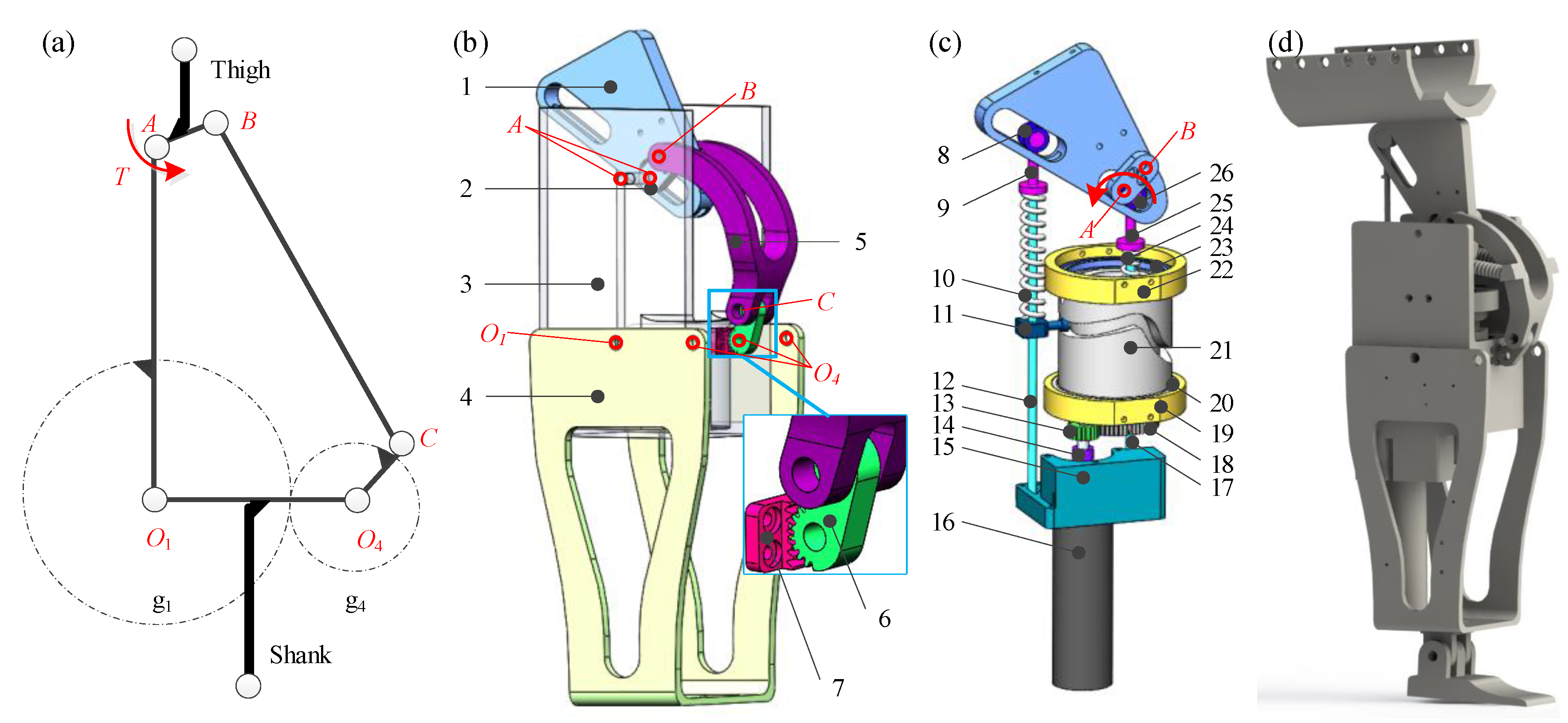
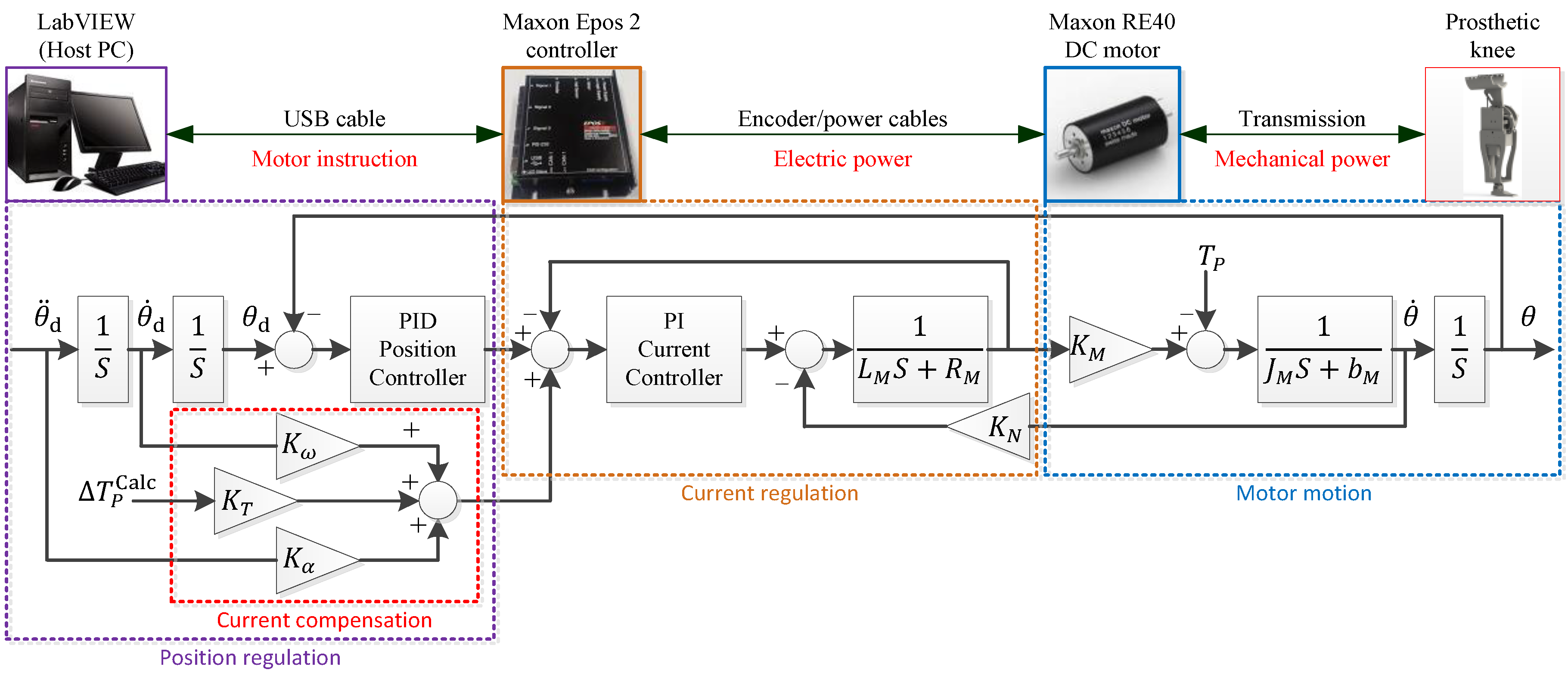
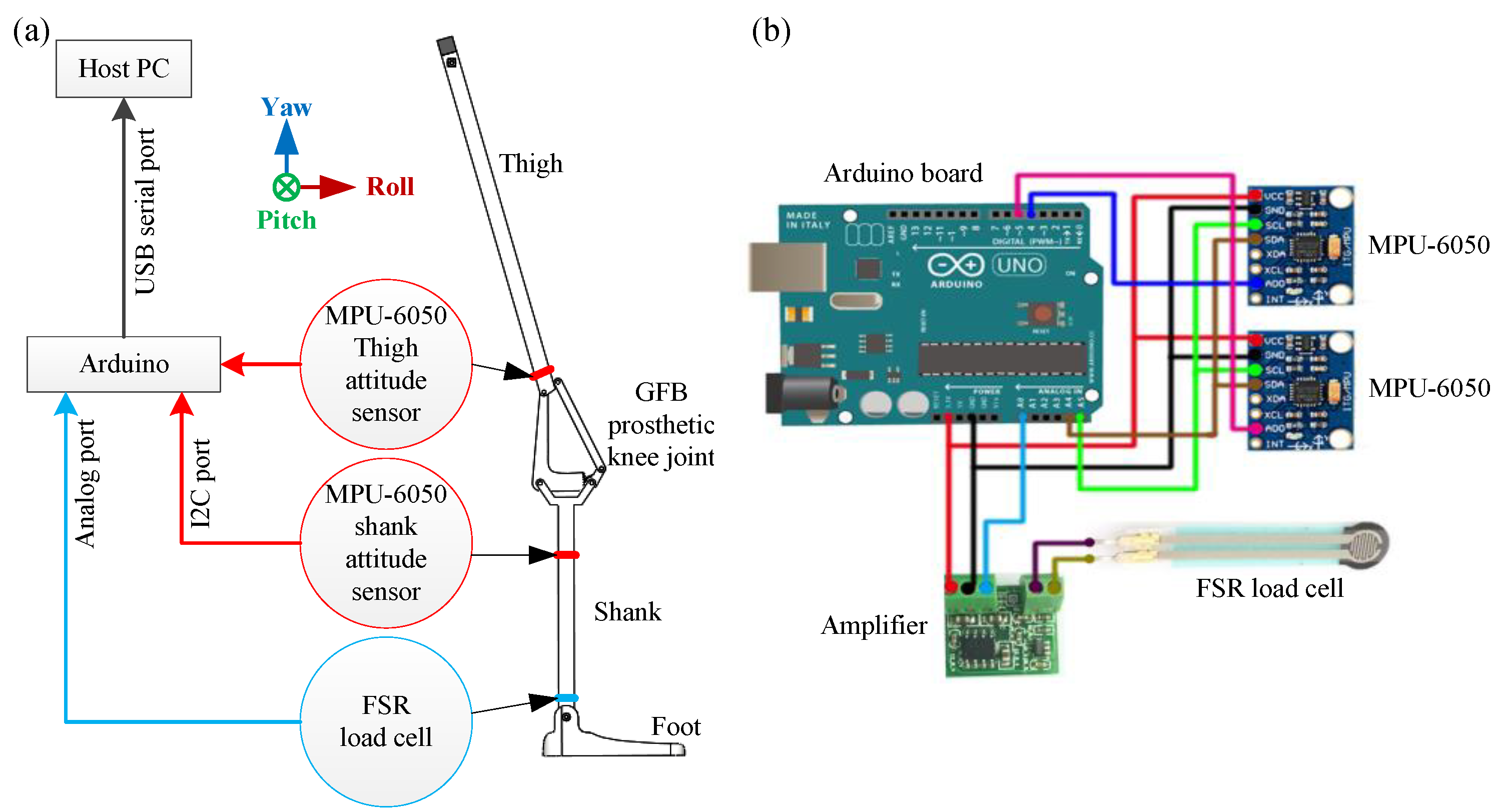
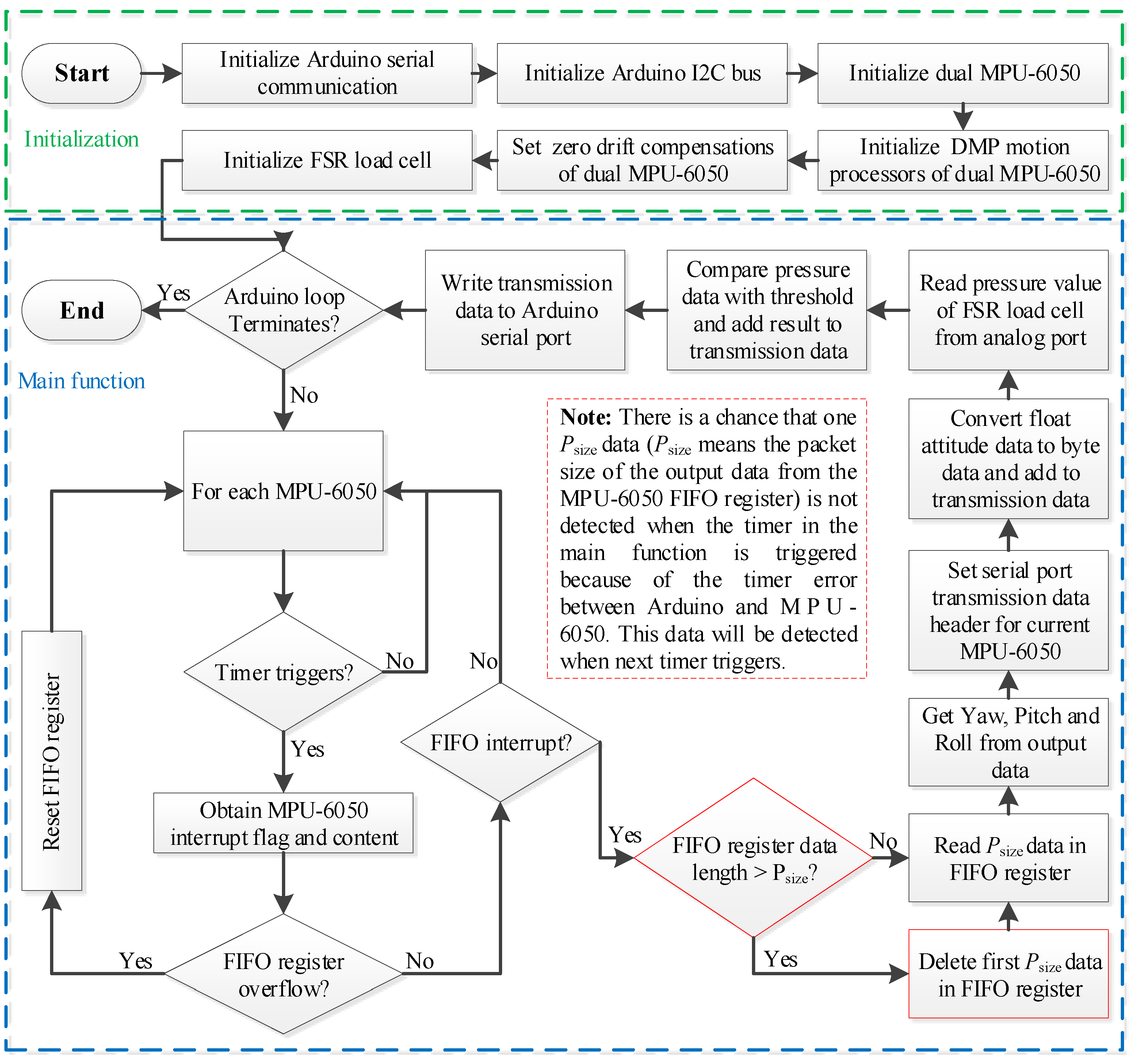


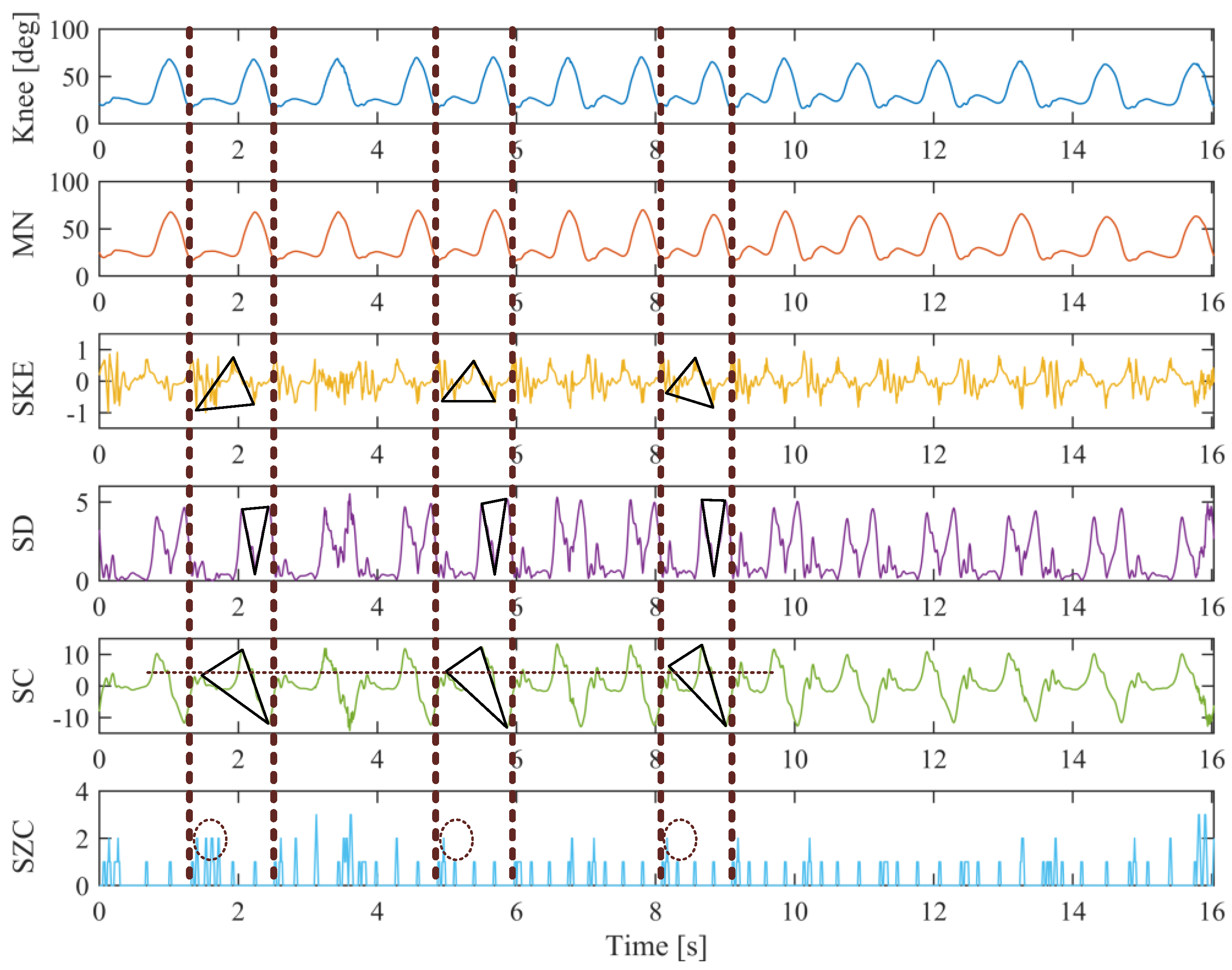
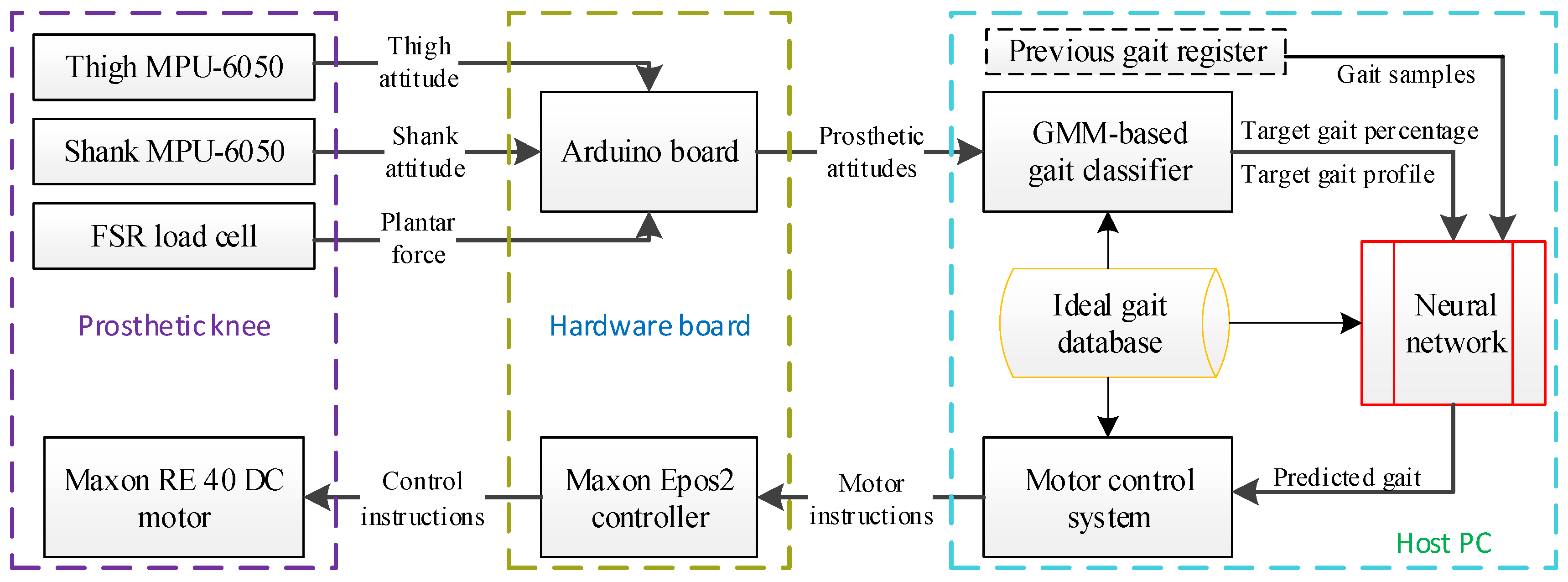
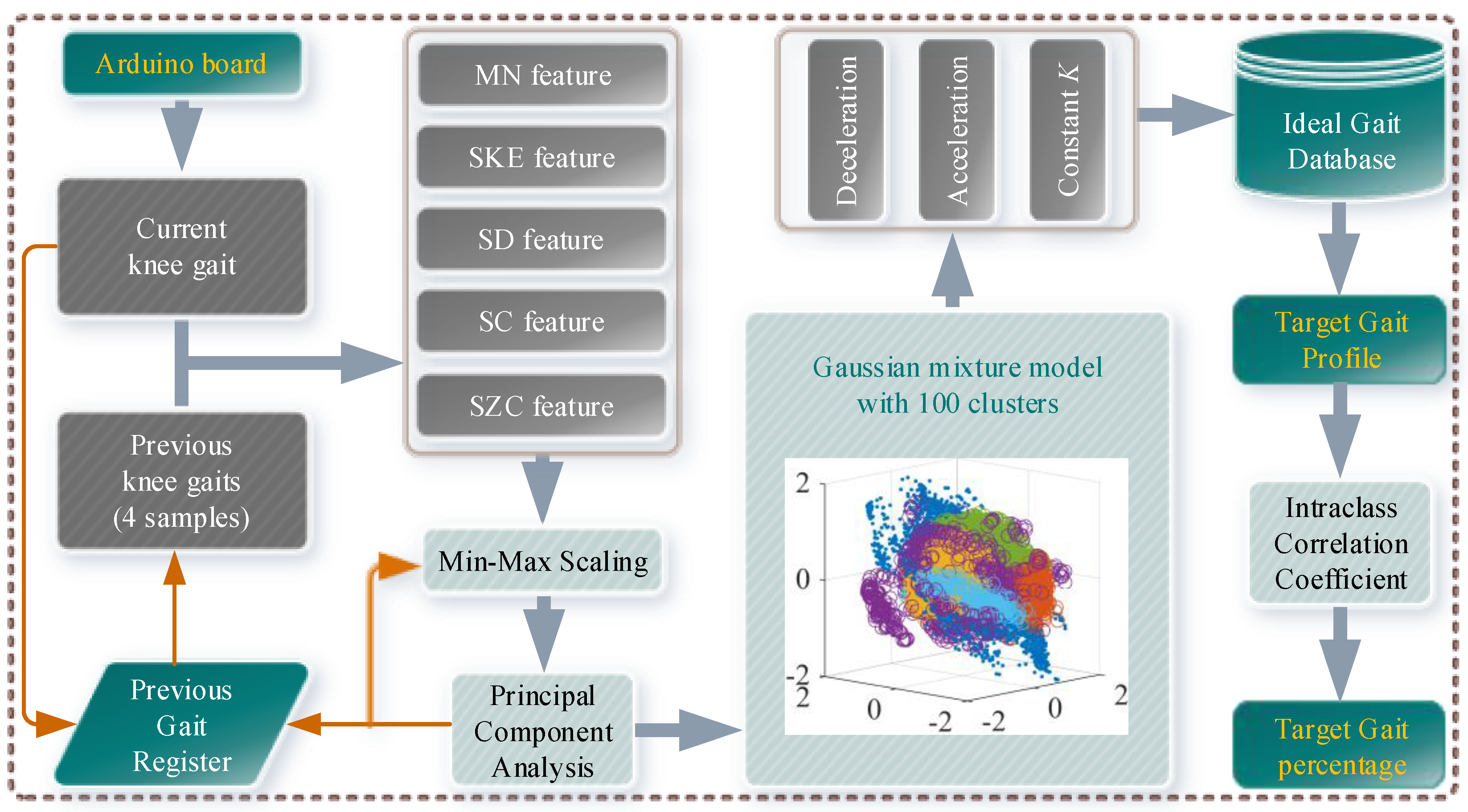

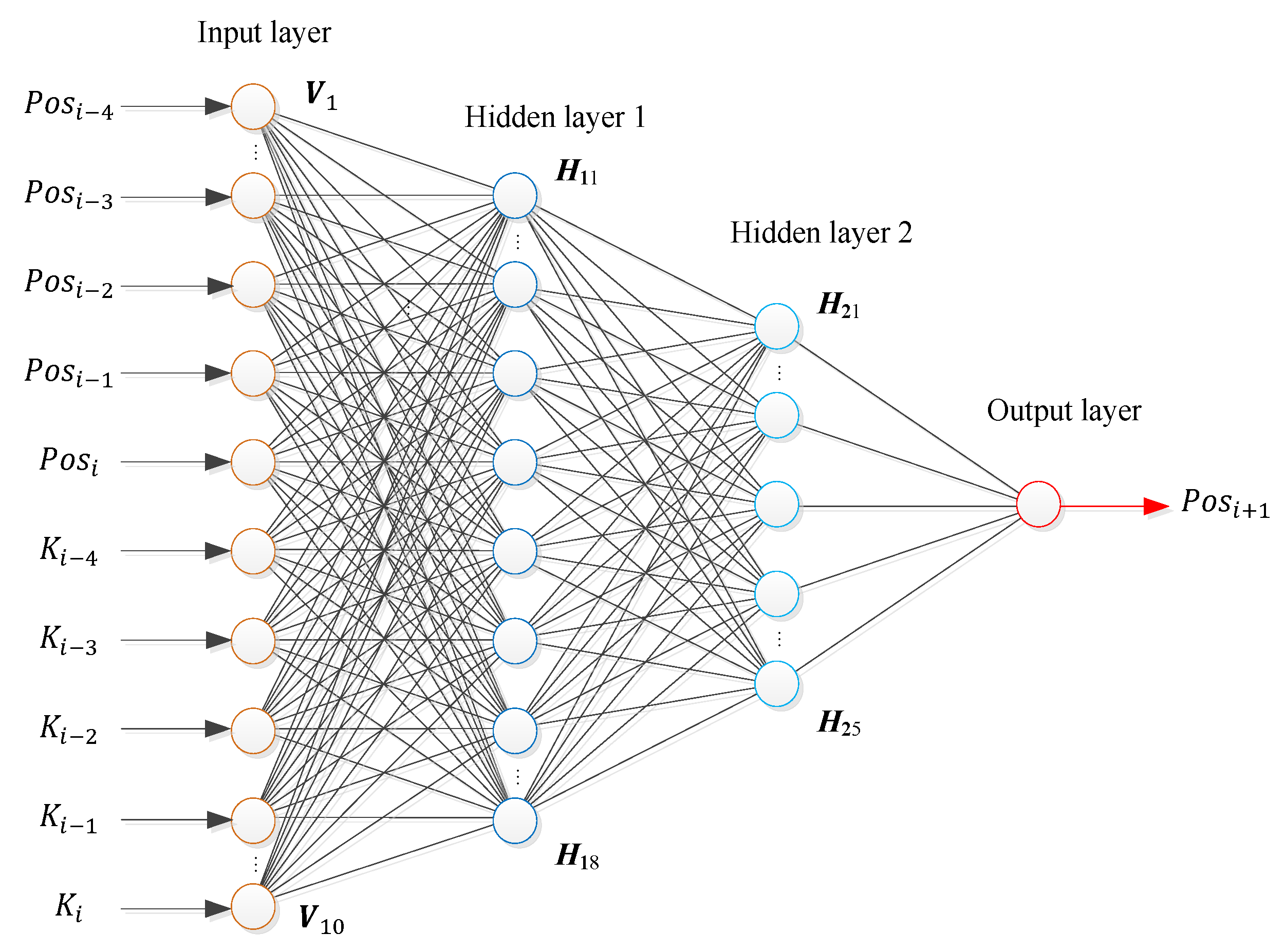
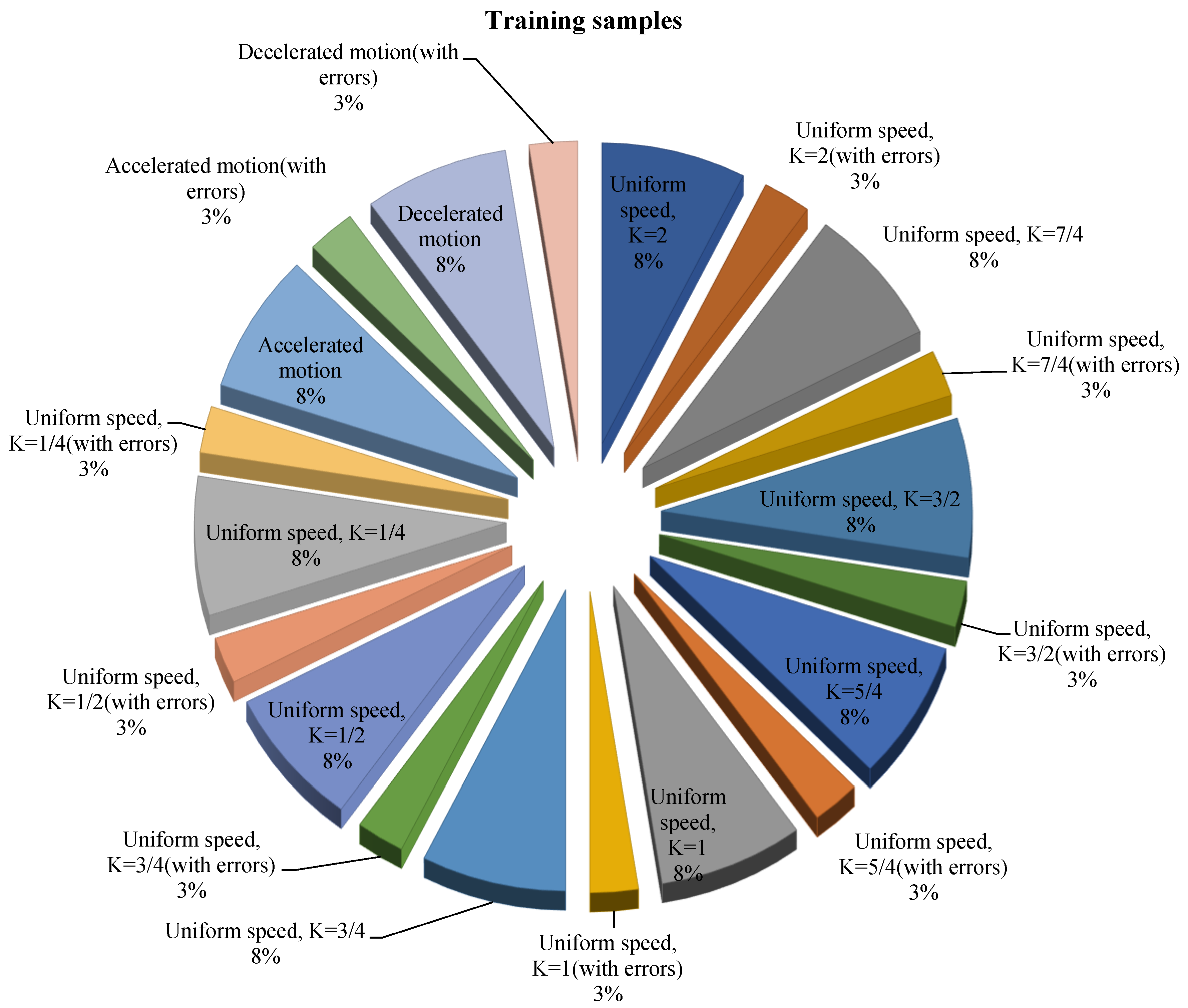

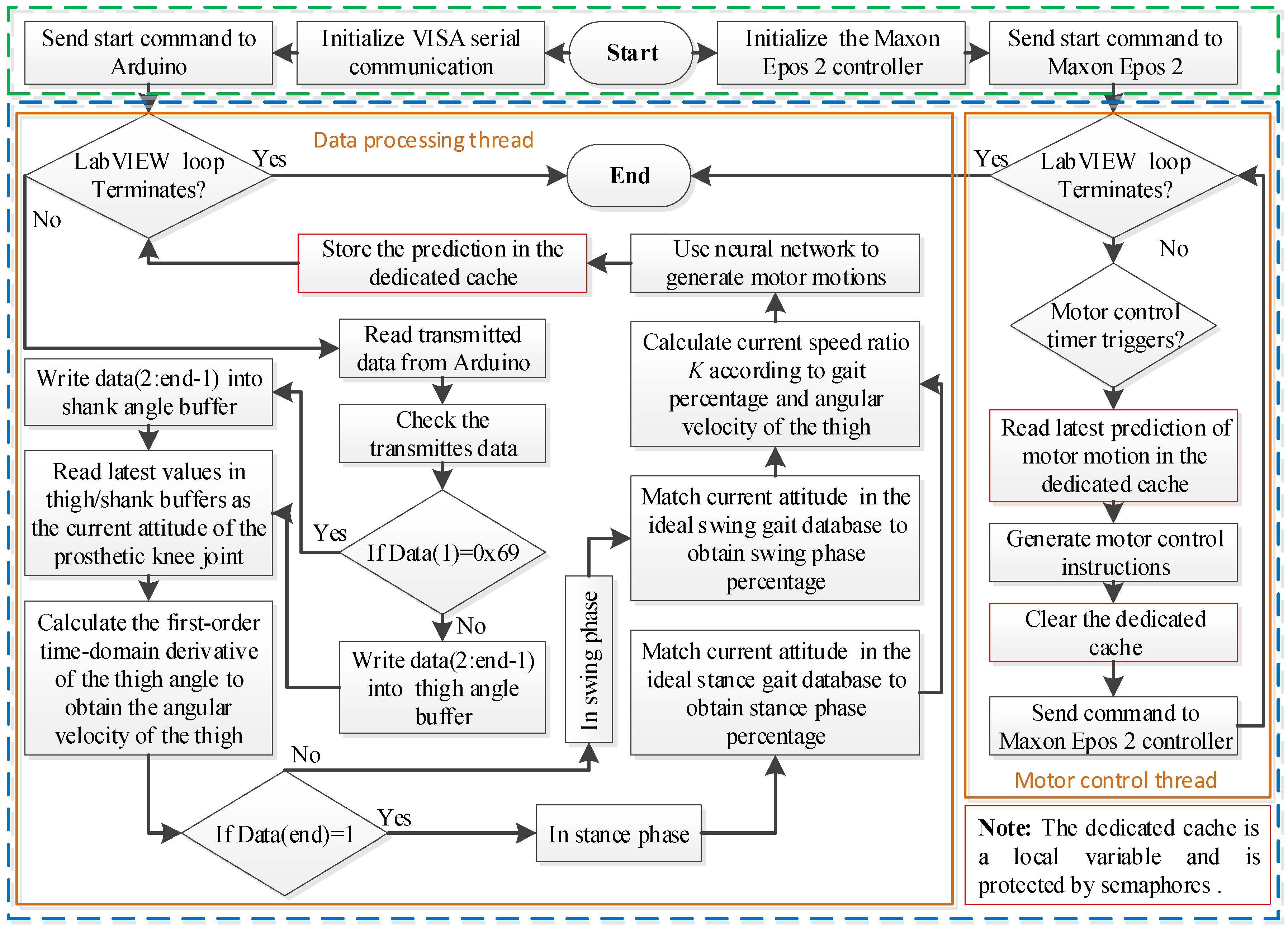

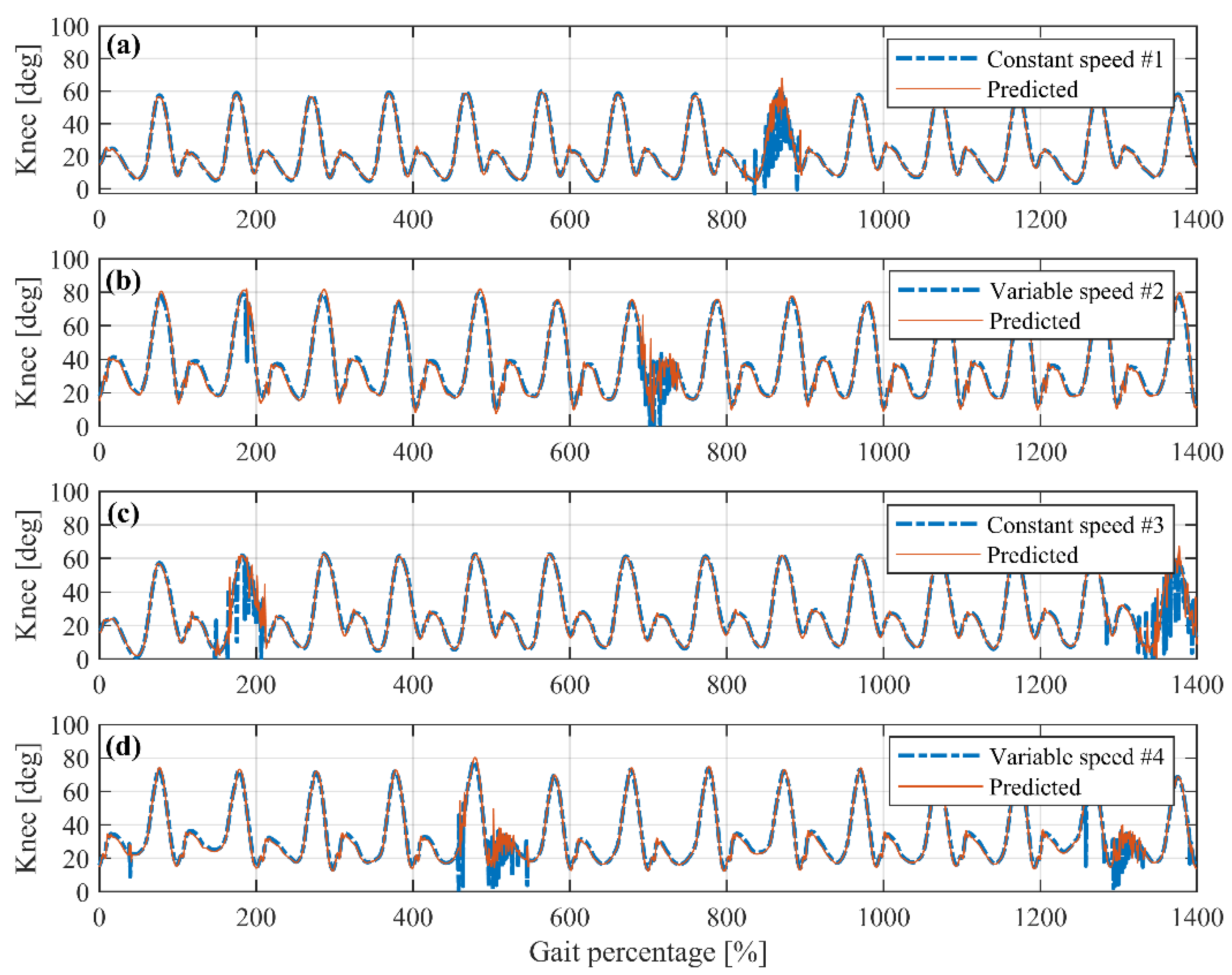
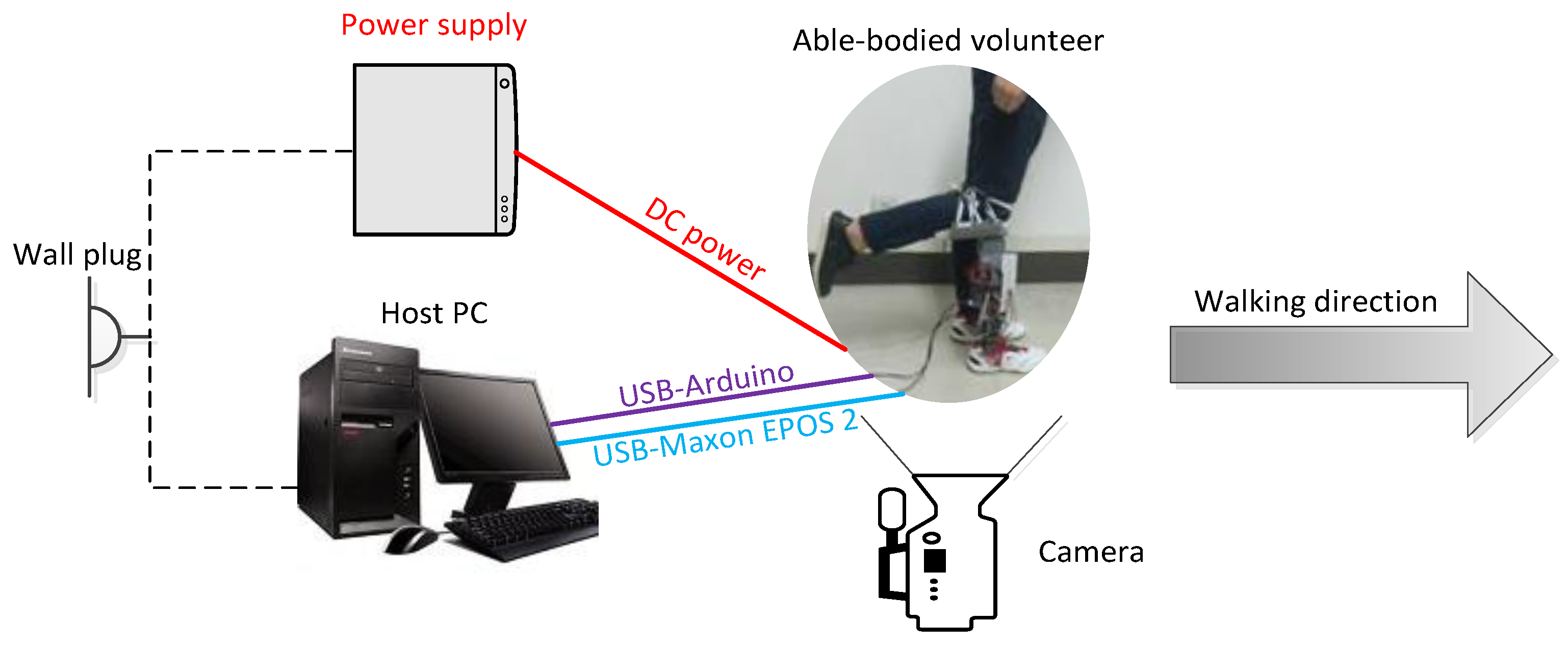

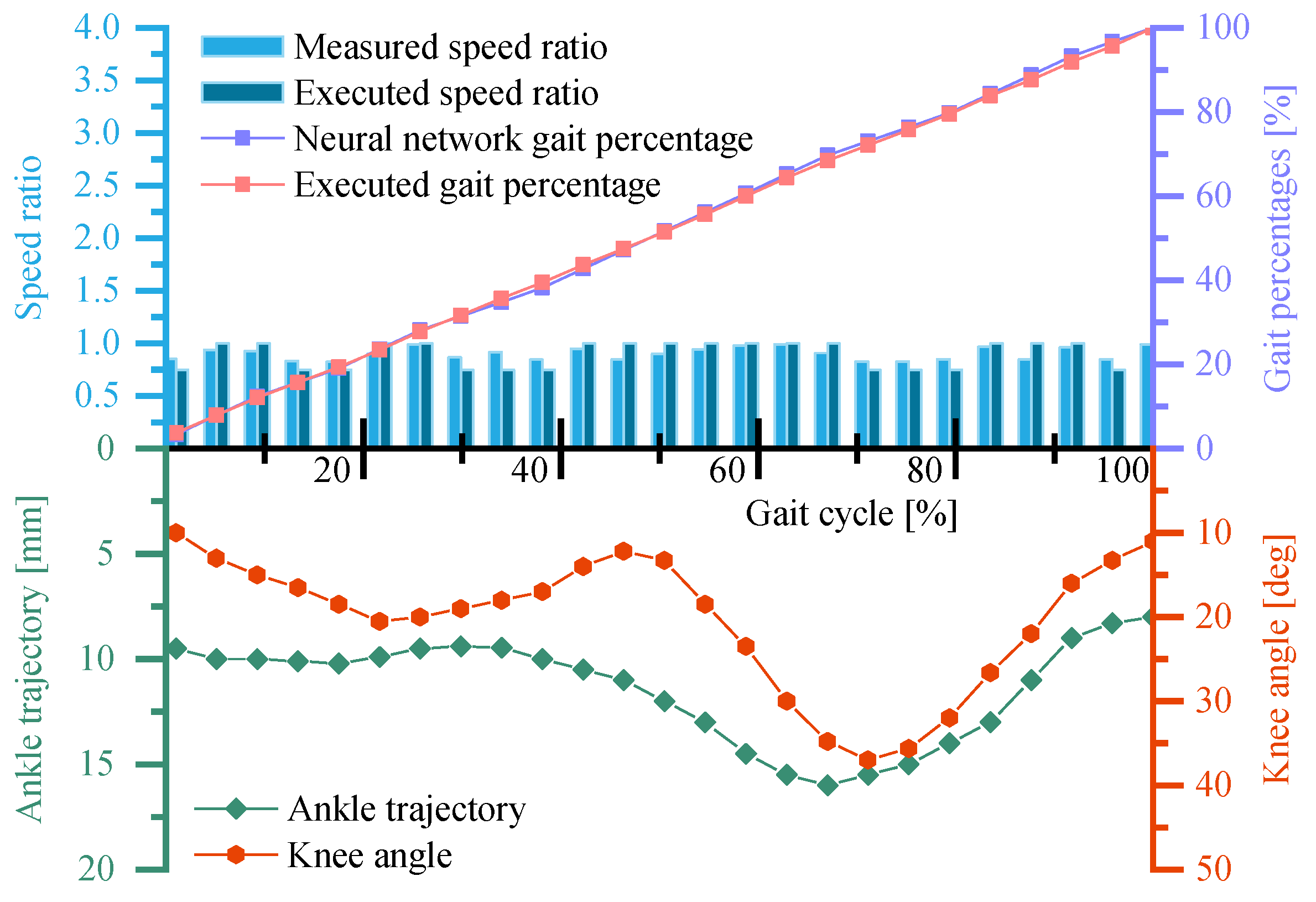
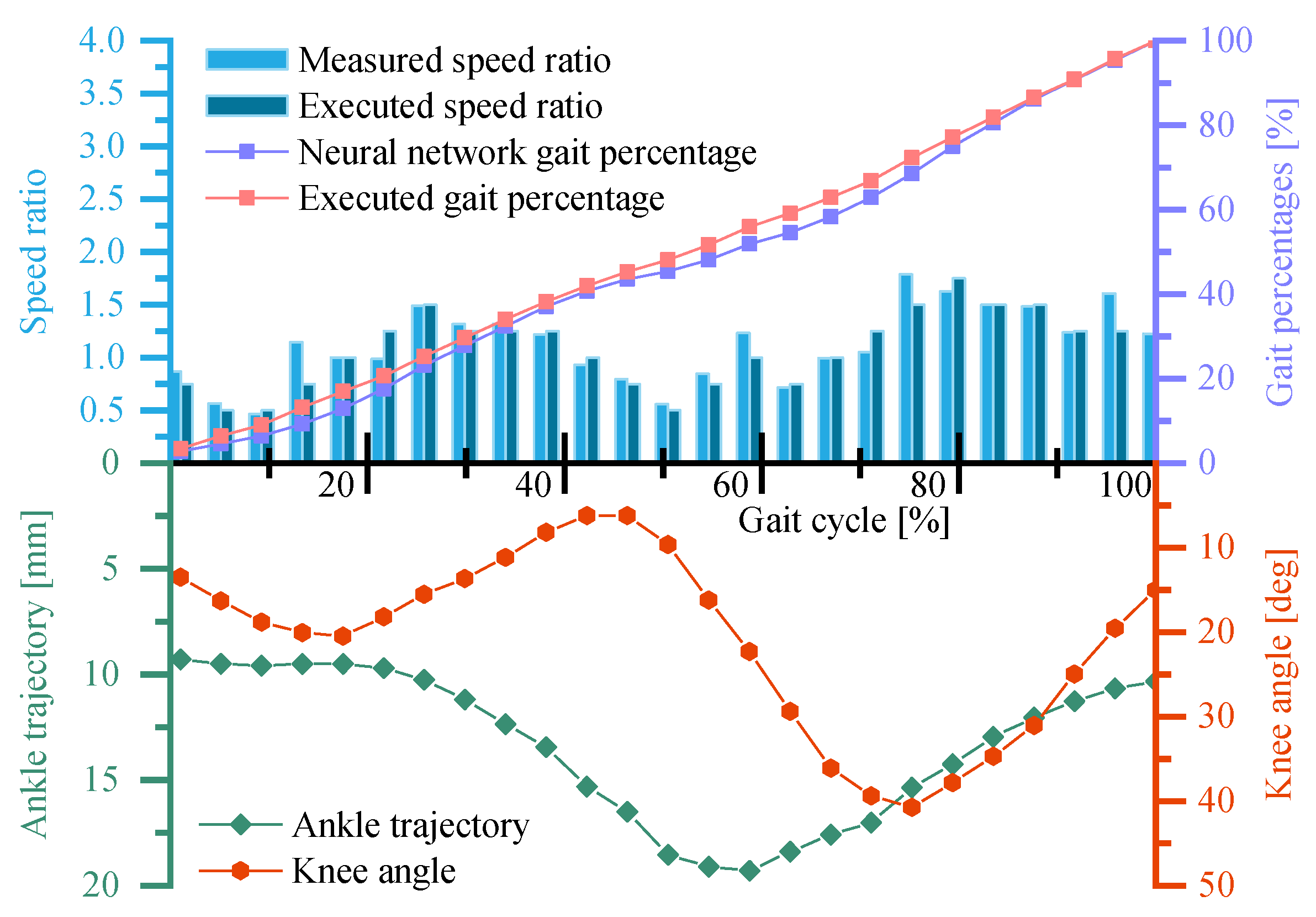
| Height | Weight (without Battery) | Max. Joint Torque | Max. Joint Speed | Max. Range of Motion |
|---|---|---|---|---|
| 0.2 m | 2.8 kg | 77 N·m | 1.85 rad/s | 2.45 rad |
| Header | Yaw Float (4 Byte) | Pitch Float (4 Byte) | Roll Float (4 Byte) | Phase Flag (1 Byte) |
|---|---|---|---|---|
| 0x69/0x0c | Y Byte 1,2,3,4 | P Byte 1,2,3,4 | R Byte 1,2,3,4 | 1/0 |
| No. | Gender | Weight | Height | Age | No. | Gender | Weight | Height | Age |
|---|---|---|---|---|---|---|---|---|---|
| 1 | male | 89 kg | 1.85 m | 29 | 6 | male | 60 kg | 1.80 m | 25 |
| 2 | male | 70 kg | 1.75 m | 28 | 7 | female | 55 kg | 1.64 m | 33 |
| 3 | female | 60 kg | 1.72 m | 25 | 8 | male | 105 kg | 1.76 m | 61 |
| 4 | female | 48 kg | 1.55 m | 19 | 9 | female | 52 kg | 1.72 m | 41 |
| 5 | male | 53 kg | 1.66 m | 24 | 10 | female | 79 kg | 1.62 m | 32 |
| Name | Expression | Name | Expression |
|---|---|---|---|
| Mean | Coefficient of Variation | ||
| Median | Skewness | ||
| Mode | Kurtosis | ||
| Total Distance | Slope Count | ||
| Variance | Slope Zero Crossing | ||
| Standard Deviation |
© 2019 by the authors. Licensee MDPI, Basel, Switzerland. This article is an open access article distributed under the terms and conditions of the Creative Commons Attribution (CC BY) license (http://creativecommons.org/licenses/by/4.0/).
Share and Cite
Sun, Y.; Huang, R.; Zheng, J.; Dong, D.; Chen, X.; Bai, L.; Ge, W. Design and Speed-Adaptive Control of a Powered Geared Five-Bar Prosthetic Knee Using BP Neural Network Gait Recognition. Sensors 2019, 19, 4662. https://doi.org/10.3390/s19214662
Sun Y, Huang R, Zheng J, Dong D, Chen X, Bai L, Ge W. Design and Speed-Adaptive Control of a Powered Geared Five-Bar Prosthetic Knee Using BP Neural Network Gait Recognition. Sensors. 2019; 19(21):4662. https://doi.org/10.3390/s19214662
Chicago/Turabian StyleSun, Yuanxi, Rui Huang, Jia Zheng, Dianbiao Dong, Xiaohong Chen, Long Bai, and Wenjie Ge. 2019. "Design and Speed-Adaptive Control of a Powered Geared Five-Bar Prosthetic Knee Using BP Neural Network Gait Recognition" Sensors 19, no. 21: 4662. https://doi.org/10.3390/s19214662
APA StyleSun, Y., Huang, R., Zheng, J., Dong, D., Chen, X., Bai, L., & Ge, W. (2019). Design and Speed-Adaptive Control of a Powered Geared Five-Bar Prosthetic Knee Using BP Neural Network Gait Recognition. Sensors, 19(21), 4662. https://doi.org/10.3390/s19214662








